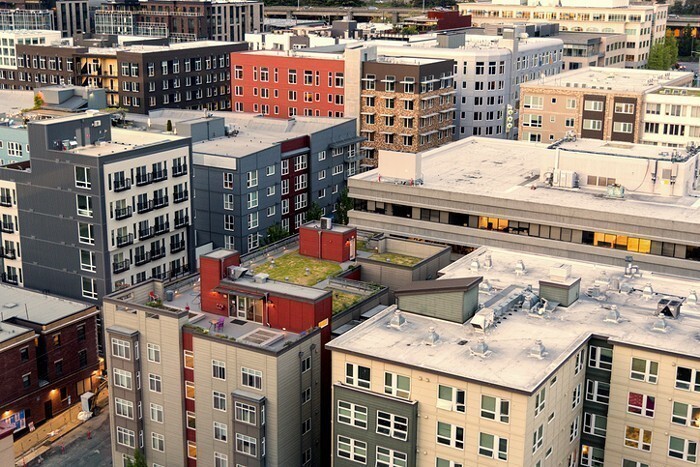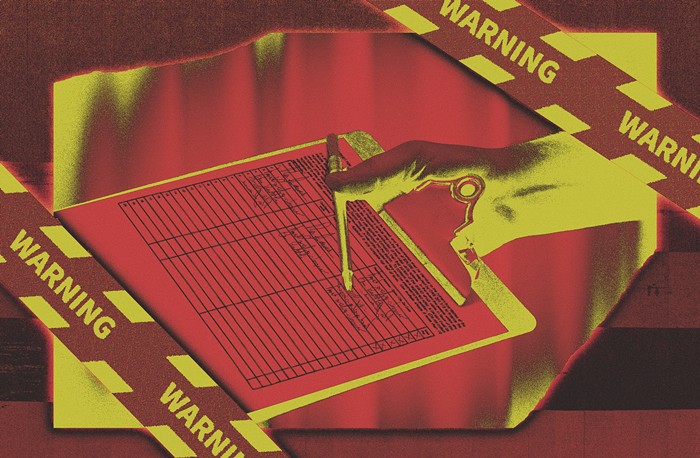The awning of USA Nails at 22nd Avenue and East Madison Street is red, white, blue—and mostly green with a carpet of moss. For years, the nail salon and adjoining bar (the former Twilight Exit) have stood vacant, waiting to be demolished and redeveloped. A weathered sign in the window remains from the last tenant: "We will be moving beginning August 2008." That was, by no coincidence, the summer that mortgage-lending scandals crippled the global economy, slammed the door on bank financing that had fueled the nation's multiyear building boom, and froze construction throughout Seattle, including the two projects planned at this intersection.
But nearly three years later, the ice is thawing. "We are hoping to get started this year," says developer Jim Mueller of his proposal to build 96 apartments at the USA Nails site and another 222 apartments across the street. While banks search for investments, Mueller says, "The stars line up for transit-served, close-in, mixed-use residential projects."
West along Madison Street, down the Pike/Pine corridor, into downtown, and at outlying light-rail stations, four- to six-story construction projects like Mueller's that have been stuck in limbo are beginning to secure financing and break ground. But unlike the last boom, developers are not planning condos, but thousands of apartments. On Madison Street alone, seven large projects are making headway this year. Many developers are scrambling to turn dirt quickly, trying to catch the crest of the next construction wave before the next bust.
"We are on the cusp right now of the largest boom market for apartments since the 1980s," says Matthew Gardner, a land-use economist and principal of real estate analysis firm Gardner Economics. "If you are a landlord, you are looking good. And the most important thing from a developer's perspective: There is money to borrow to build apartments. It is very unlikely we will see a condo tower break ground in the city."
Downtown, this means apartment towers: At Sixth Avenue and Lenora Street, twin 24-story towers that waited in the wings during the bust finally have capital to break ground "in the next 30 days," says Pine Street Group managing partner Matt Griffin. His investment partner, Bentall Kennedy, "agrees it's time to go," Griffin says. That project will contain 652 apartments. To the south, on Second Avenue and Pine Street, sources close to a previously stalled hotel-condo hybrid project foresee action soon—now as a 296-unit, 35-story apartment building. And developer Kevin Daniels said in March that he will break ground this summer in the massive parking lot north of Qwest Field to build two apartment towers, part of a 1.5-million-square-foot development project that's been in the works for years.
Technically, construction permits are up by only 15 percent compared to this time last year, says city Department of Planning and Development spokesman Bryan Stevens. But overwhelmingly, the projects making headway this spring were designed at the end of the last boom and already have permits (but were too late to get financing and are now being repurposed as rentals).
"You have folks who were trapped by the end of the last cycle, but they were able to fence up their properties and now they get to be at the top of the market, which is good. But it's also scary, because we don't know what this next cycle looks like," says Sally Clark, Seattle City Council's chair of the development committee. Among those fenced projects: Murray Franklyn has finally excavated a block-long chasm and is laying concrete where a gravel lot sat for years on Belmont Avenue and East Pine Street. Again, apartments.
"The stigma behind renting rather than owning doesn't exist anymore," says Gardner. There are several reasons for this, he says. Buyers are wary of signing mortgages on properties that may lose value. More baby boomers are retiring in the city. And younger generations are favoring smaller, urban quarters to sprawling suburbs. But Gardner adds, the apartment boom comes with some risk: "We are going to be delivering a lot of units in 2013 and 2014, but we could be oversupplied at that time." ![]()


















